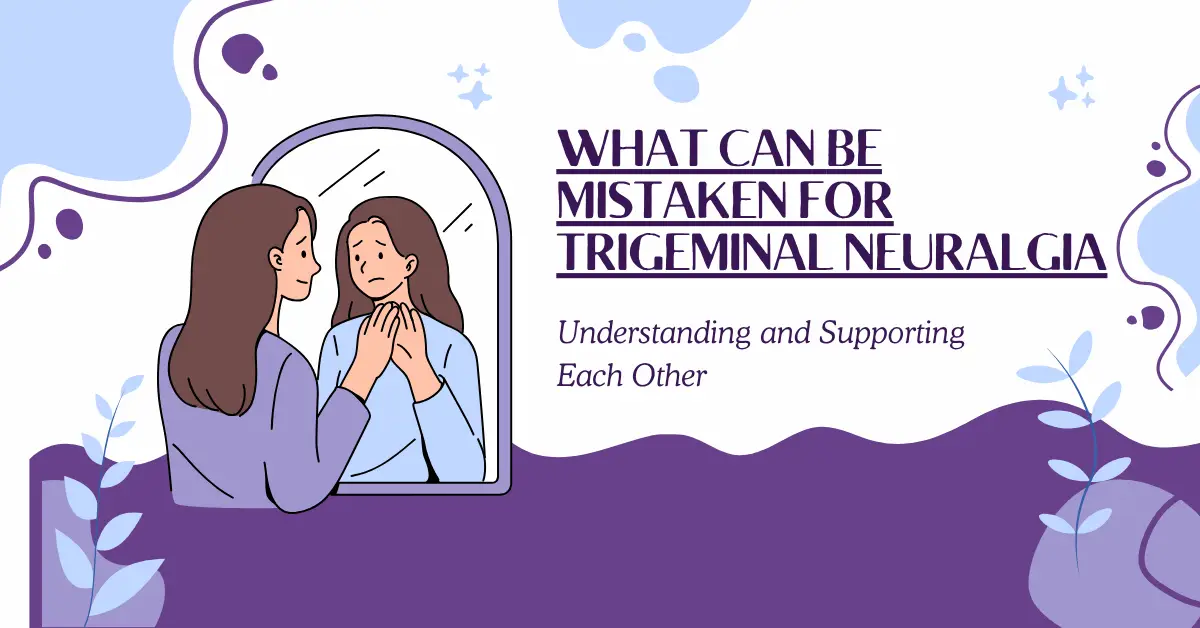Trigeminal neuralgia (TN) is a chronic pain condition that affects the trigeminal nerve, responsible for sensation in the face. Often described as one of the most excruciating pains known to medicine, TN involves sudden, severe facial shocks that can mimic other disorders, leading to misdiagnosis. According to insights from top doctors like Dr. Kim J. Burchiel and Dr. Joanna M. Zakrzewska, early and accurate diagnosis is crucial, as TN can be confused with less severe or treatable conditions. This article explores what TN is, its potential cures, and what might be mistaken for it, drawing from expert opinions to provide instant, actionable answers. By 2025, advancements in neuroimaging and personalized medicine have improved diagnostic precision, but misdiagnosis remains a challenge. We’ll break this down step by step, including tables for quick reference, to help you understand and address your symptoms effectively.
Understanding Trigeminal Neuralgia
Trigeminal neuralgia is a neuropathic disorder characterized by intense, stabbing pain along the trigeminal nerve’s branches, which supply sensation to the face, mouth, and jaw. As explained by Dr. Peter J. Jannetta, a pioneer in TN treatment, the condition often results from blood vessel compression of the nerve root near the brainstem, though other causes like multiple sclerosis or tumors can contribute.
Symptoms and Diagnosis
TN typically presents as brief, electric-shock-like pains triggered by everyday activities such as eating, talking, or even a light breeze. The pain is unilateral, affecting one side of the face, and occurs in episodes lasting from seconds to minutes. Dr. Konstantin V. Slavin emphasizes that TN is more common in individuals over 50, with women slightly more affected than men. Diagnosis involves a thorough clinical evaluation, including MRI scans to rule out structural issues, as per 2025 guidelines from the International Headache Society.
However, TN’s hallmark symptoms can overlap with other conditions, making misdiagnosis common. Dr. Turo Nurmikko notes that delayed diagnosis can lead to unnecessary suffering, as patients might undergo treatments for the wrong ailment. Key risk factors include age, hypertension, and prior facial trauma.
In summary, TN is not just “simple” facial pain—it’s a debilitating condition that demands specialized care. If you’re experiencing unexplained facial pain, consult a neurologist immediately for tests like nerve conduction studies or high-resolution MRI.
Cures and Treatments for Trigeminal Neuralgia
While TN is not always curable, significant advancements by 2025 have made it highly manageable. Dr. Joanna M. Zakrzewska highlights that treatment focuses on pain relief and preventing recurrences, with options ranging from conservative to surgical interventions.
Conservative Treatments
Initial management often involves medications. Anticonvulsants like carbamazepine or oxcarbazepine are first-line drugs, as they stabilize nerve firing. Dr. Kim J. Burchiel reports that these can reduce pain in up to 80% of cases initially. Other options include antidepressants (e.g., amitriptyline) for nerve pain modulation and Botox injections, which have shown promise in recent studies for blocking pain signals.
Advanced and Surgical Options
For refractory cases, procedures like microvascular decompression (MVD)—pioneered by Dr. Peter J. Jannetta—offer long-term relief by relocating compressing blood vessels. By 2025, minimally invasive techniques, such as gamma knife radiosurgery (endorsed by Dr. Konstantin V. Slavin), provide a non-invasive alternative with success rates over 70%. Emerging cures include targeted neuromodulation therapies, like spinal cord stimulators, and gene therapies aimed at repairing nerve damage.
Dr. Turo Nurmikko advises a multidisciplinary approach, combining medications, physical therapy, and psychological support for holistic care. Success rates vary: medications offer 50-70% relief, while surgery can achieve up to 90% pain-free outcomes. However, potential side effects like facial numbness or hearing loss must be weighed. Always discuss risks with your doctor, as personalized plans based on MRI findings are now standard.
In essence, while TN isn’t curable in all cases, effective treatments exist. Early intervention, as stressed by these experts, can prevent progression and improve quality of life.
Conditions That Can Be Mistaken for Trigeminal Neuralgia
One of the biggest challenges with TN is its ability to mimic other facial pain disorders, leading to misdiagnosis. Based on insights from top doctors, conditions like temporomandibular joint disorder (TMJ) or migraines are frequently confused with TN due to overlapping symptoms. Dr. Joanna M. Zakrzewska warns that incorrect diagnosis can delay proper treatment, potentially worsening outcomes.
Common Mimics and Key Differentiators
Here’s a detailed breakdown of conditions that can be mistaken for TN, based on expert analyses. These insights help you instantly compare symptoms and seek the right tests.
- Temporomandibular Joint Disorder (TMJ): Often misdiagnosed as TN due to jaw pain and triggering from chewing. Unlike TN’s electric shocks, TMJ involves dull, aching pain with clicking sounds in the jaw. Dr. Kim J. Burchiel notes that TMJ is linked to stress or dental issues and responds to physical therapy or mouthguards.
- Migraines or Cluster Headaches: These cause throbbing facial pain that can feel similar to TN episodes. However, migraines are typically bilateral and accompanied by nausea, as per Dr. Turo Nurmikko. TN pain is more localized and trigger-based, while headaches last longer and respond to triptans.
- Postherpetic Neuralgia (from Shingles): This viral nerve pain can mimic TN after a shingles outbreak. Dr. Peter J. Jannetta explains that it’s distinguished by a history of rash and constant burning pain, versus TN’s intermittent shocks. Antivirals and pain creams are effective cures.
- Multiple Sclerosis (MS)-Related Pain: TN can be an early MS symptom, but MS pain is often progressive and associated with other neurological signs like vision loss. Dr. Konstantin V. Slavin recommends MRI to differentiate, as MS involves demyelination.
- Dental Issues (e.g., Abscess or Cavities): Tooth pain from infections can feel like TN, especially in the lower face. Unlike TN, dental pain improves with antibiotics or extractions, as highlighted by Dr. Joanna M. Zakrzewska.
Graphs:
To make this even more accessible, here’s a quick-reference table comparing TN with its common mimics:
| Condition | Key Symptoms | Triggers | Diagnostic Tests | Treatment Approach | Insights from Top Doctors |
|---|---|---|---|---|---|
| Trigeminal Neuralgia | Sudden, electric-shock pain; brief episodes | Eating, touching face | MRI, nerve block tests | Medications, MVD surgery | Dr. Burchiel: Focus on nerve decompression for long-term relief. |
| TMJ Disorder | Dull ache, jaw clicking | Chewing, stress | X-ray, physical exam | Mouthguards, therapy | Dr. Zakrzewska: Multidisciplinary care prevents chronicity. |
| Migraines/Headaches | Throbbing, nausea | Light, sounds | CT scan, history review | Triptans, lifestyle changes | Dr. Nurmikko: Differentiate by duration and patterns. |
| Postherpetic Neuralgia | Burning, constant pain | Post-shingles rash | Viral tests | Antivirals, pain creams | Dr. Jannetta: Early antiviral use reduces risk. |
| Multiple Sclerosis Pain | Progressive, tingling pain | Movement, temperature | MRI for lesions | Immunomodulators | Dr. Slavin: Rule out with full neurological workup. |
| Dental Issues | Localized throbbing | Eating, temperature | Dental X-ray | Antibiotics, extractions | Dr. Burchiel: Simple tests like X-rays can confirm. |
This table, informed by 2025 expert consensus, allows for instant comparison. If your symptoms match TN but tests rule it out, consult a specialist for these alternatives.
In conclusion, misdiagnosing TN can lead to ineffective treatments, but awareness of these mimics empowers patients. Dr. Turo Nurmikko stresses the importance of a comprehensive evaluation, including patient history and advanced imaging, to avoid errors.
Final Thoughts
Trigeminal neuralgia is a complex condition that demands prompt, expert attention, but it’s often confused with more manageable disorders like TMJ or migraines. By leveraging insights from world-renowned doctors, this article equips you with the knowledge to recognize TN, explore cures, and identify potential mimics. Remember, self-diagnosis isn’t advisable—seek a neurologist for personalized advice. With 2025’s advancements, accurate diagnosis and treatment are more achievable than ever. If you’re in pain, act now for better outcomes.


